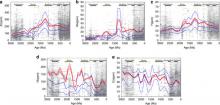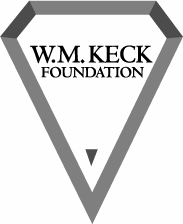
The study by Keck Project scientists, Chao Liu, Andrew H. Knoll, and Robert M. Hazen, on Rodinia has been published in Nature Communications.
Geochemical and mineralogical evidence that Rodinian assembly was unique (doi:10.1038/s41467-017-02095-x)
The mineralogy and geochemistry associated with Rodinian assembly (~1.3–0.9 Ga) are significantly different from those of other supercontinents. Compared to other supercontinents, relatively more Nb-bearing minerals, Y-bearing minerals, and zircons formed during Rodinian assembly, with corresponding enrichments of Nb, Y, and Zr concentrations in igneous rocks. By contrast, minerals bearing many other elements (e.g., Ni, Co, Au, Se, and platinum group elements) are significantly less abundant, without corresponding depletion of Ni and Co concentrations in igneous rocks. Here we suggest that the Nb, Y, and Zr enrichments in igneous rocks and relatively more occurrences of corresponding Nb-bearing minerals, Y-bearing minerals, and zircons result from significant non-arc magmatism during the mid-Proterozoic, while fewer occurrences of many other minerals suggest enhanced erosion of Rodinian volcanic arcs and orogens. The prolonged, extrovert assembly of Rodinia from thickened mid-Proterozoic continental crust via two-sided subduction can account for both the prevalence of non-arc magmatism and the enhanced erosion.


